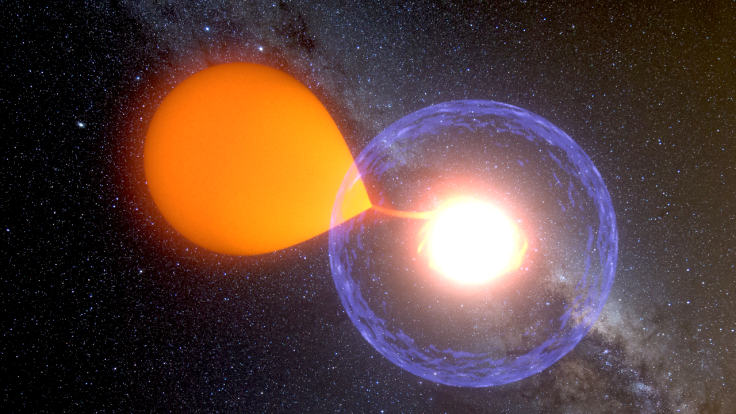Astronomers Capture A Distant White Dwarf Going Nova After Waking Up From A Long Slumber

A team of astronomers associated with the Optical Gravitational Lensing Experiment — a massive and sustained sky survey — have captured an event that is incredibly rare in the human scale of things — a white dwarf going nova. The tiny star is part of the binary system V1213 located over 20,000 light-years from Earth and its explosion was observed by astronomers in 2009.
As the researchers describe in a new study published in the journal Nature, they had been monitoring the distant star system since 2003, and therefore were able to capture it before, during, and after it exploded.
“When novae or supernovae go off, they are usually followed up with many telescopes, and therefore we know a great deal about the ‘after’ of these explosions,” Carles Badenes, an astronomer at the University of Pittsburgh, who was not involved in the study, told the Verge. “But it is of course very hard to know...which star is going to do something interesting, so the ‘before’ is very much a mystery.”
It is important to note that a “classical nova” is not the same as a supernova. While the latter, which is much more powerful, occurs when a star dies, a classical nova eruption takes place only in a binary system — a star system where two stars orbit around a common centre of mass.
“From time to time such systems undergo large-amplitude brightenings. The most spectacular eruptions, with a ten-thousandfold increase in brightness, occur in classical novae and are caused by a thermonuclear runaway on the surface of the white dwarf,” the authors wrote in the study. “Such eruptions are thought to recur on timescales of ten thousand to a million years.”
This particular system, located in the southern sky in the direction of the constellation Centaurus, consists of two stars — a white dwarf and an active, albeit dim, companion — locked in an extremely tight orbit.
“The distance between those two stars is very small - actually one solar radius,” Przemek Mróz, the study’s lead author and a PhD student at the Warsaw University Astronomical Observatory, told the BBC. “Imagine that inside the Sun, you have two stars that are orbiting each other.”
These observations can help scientists understand the process of stellar mass-transfer leading up to the explosion — something that they hope would eventually provide answers to what makes a star go nova. In fact, as the authors state in their study, their observations support what is known as the “hibernation model” for classical novae, which posits that between two explosions, the system goes almost completely dark for a thousand to a million years as the mass-transfer rate drops.
© Copyright IBTimes 2024. All rights reserved.





















